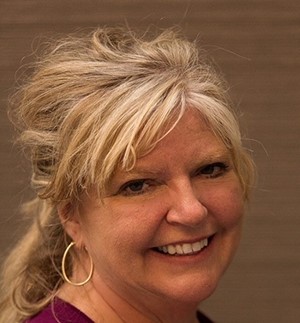Topic intro description here. Limited to 145 characters. Topic intro description here. Limited to 145 characters. Topic intro description here.
WEBINAR: The HIE Playbook for Overcoming Data Challenges During the Pandemic
You can watch the video of this webinar here.
How to Grow Your Practice Through Telehealth with Reimbursement Considerations
As the COVID-19 outbreak continues to surge, physicians and other healthcare providers are moving towards telehealth and remote patient monitoring to reduce in person contact and to stop the spread of the virus. To support physicians and other healthcare providers, CMS has also eased restrictions on telehealth reimbursements.
Webinar Series: eHI Privacy and Security
Please join us to hear how privacy policies and regulations have changed in the face of the COVID-19 pandemic. Julie Barnes, of Maverick Health Policy, will speak with eHI Vice President Alice Leiter about the many ways federal health agencies are navigating patient data privacy in light of the coronavirus crisis, including adjustments related to data sharing for public health purposes and the relaxation of telehealth enforcement.
Presenters:
Webinar Presentation: Coronavirus: Can Artificial Intelligence Make A Difference?
The US health system is at the brink of operating at above capacity and healthcare organizations need clarity on how to address COVID-19 risk within their population and their community more broadly. AI has the ability to deliver intelligence that can assist national response to COVID-19 by : giving insights into which hospitals will have similar experiences and impacts; identifying expected relative risk across geographies; surface high-risk patient populations; and provide clinicians with point-of-care clinical decision support.
Please join us while we discuss some important developments in AI with real-world examples and how providers and communities can apply them to drive optimal outcomes during times like these.
Presentation recoding, slides, and additional resources are present at the bottom of this page.
Speakers:
Lori Tremmel Freeman
Chief Executive Officer, NACCHO
 Lori Freeman is the Chief Executive Officer (CEO) at the National Association of County and City Health Officials (NACCHO), effective May 1, 2018. Prior to joining NACCHO, Ms. Freeman served as the CEO of the Association of Maternal & Child Health Programs (AMCHP) since 2014 where she was responsible for ensuring the success of all AMCHP’s operations. Ms. Freeman has developed and overseen cooperative agreements and grants with a variety of government agencies and private foundations including procuring, planning, developing and implementing annual and multiyear grant proposals. Throughout her tenure in nonprofit management, she has contributed widely in senior managerial roles in strategic planning and visioning, building relationships and partnering opportunities, membership and new business development, foundation start-up and fundraising, the creation of benefits and services, use of technology to advance organizations, event turnaround, and program management.
Lori Freeman is the Chief Executive Officer (CEO) at the National Association of County and City Health Officials (NACCHO), effective May 1, 2018. Prior to joining NACCHO, Ms. Freeman served as the CEO of the Association of Maternal & Child Health Programs (AMCHP) since 2014 where she was responsible for ensuring the success of all AMCHP’s operations. Ms. Freeman has developed and overseen cooperative agreements and grants with a variety of government agencies and private foundations including procuring, planning, developing and implementing annual and multiyear grant proposals. Throughout her tenure in nonprofit management, she has contributed widely in senior managerial roles in strategic planning and visioning, building relationships and partnering opportunities, membership and new business development, foundation start-up and fundraising, the creation of benefits and services, use of technology to advance organizations, event turnaround, and program management.
John Frownfelter, MD
Chief Medical Information Officer, Jvion
 John is an internist and physician executive in Health Information Technology and is currently leading Jvion’s clinical strategy. With over 15 years’ leadership experience he has a broad range of expertise in systems management, care transformation and health information systems. Dr. Frownfelter has held a number of medical and medical informatics leadership positions over nearly two decades, highlighted by his role as Chief Medical Information Officer for Inpatient services at Henry Ford Health System and Chief Medical Information Officer for UnityPoint Health where he led clinical IT strategy and launched the analytics programs. Since 2015, Dr. Frownfelter has been bringing his expertise to healthcare through health IT advising to both industry and health systems. His work with Jvion has enhanced their clinical offering and their implementation effectiveness. Dr. Frownfelter has also held professorships at St. George’s University and Wayne State schools of medicine, and the University of Detroit Mercy Physician Assistant School. Dr. Frownfelter received his MD from Wayne State University School of Medicine.
John is an internist and physician executive in Health Information Technology and is currently leading Jvion’s clinical strategy. With over 15 years’ leadership experience he has a broad range of expertise in systems management, care transformation and health information systems. Dr. Frownfelter has held a number of medical and medical informatics leadership positions over nearly two decades, highlighted by his role as Chief Medical Information Officer for Inpatient services at Henry Ford Health System and Chief Medical Information Officer for UnityPoint Health where he led clinical IT strategy and launched the analytics programs. Since 2015, Dr. Frownfelter has been bringing his expertise to healthcare through health IT advising to both industry and health systems. His work with Jvion has enhanced their clinical offering and their implementation effectiveness. Dr. Frownfelter has also held professorships at St. George’s University and Wayne State schools of medicine, and the University of Detroit Mercy Physician Assistant School. Dr. Frownfelter received his MD from Wayne State University School of Medicine.
Priyanka Surio
Director of Informatics, ASTHO
 Ms. Surio currently serves as the Director of Data Analytics and Public Health Informatics within ASTHO’s Center for Population Health Strategies where she manages the Informatics project portfolio across ASTHO. Projects address population health issues for state and territorial health departments and include work in data linkages, disease surveillance, data partnerships for violence prevention and electronic case reporting, and building health IT/informatics and disease surveillance capacity through strategic planning and workforce development. Ms. Surio is an accomplished leader with 7+ years of experience in healthcare systems process improvement and expertise in project management, research methods, statistical analytics, and health education and policy.
Ms. Surio currently serves as the Director of Data Analytics and Public Health Informatics within ASTHO’s Center for Population Health Strategies where she manages the Informatics project portfolio across ASTHO. Projects address population health issues for state and territorial health departments and include work in data linkages, disease surveillance, data partnerships for violence prevention and electronic case reporting, and building health IT/informatics and disease surveillance capacity through strategic planning and workforce development. Ms. Surio is an accomplished leader with 7+ years of experience in healthcare systems process improvement and expertise in project management, research methods, statistical analytics, and health education and policy.
John Showalter, MD
Chief Product Officer, Jvion
 Dr. Showalter brings visionary thought leadership on the application of advanced information technology to improving outcomes for patients. His unique education in biomedical engineering, physiology, clinical informatics and internal medicine has allowed him to work at the intersection of those fields to positively impact patient care and health system efficiency. His work has been recognized with cross-industry awards including ComputerWorld's Premiere 100 IT Leaders and health IT awards such as the CHIME Collaboration Award. Dr. Showalter is dedicated to using his passion and knowledge to ensure that Jvion's machine has the maximum positive impact for patients.
Dr. Showalter brings visionary thought leadership on the application of advanced information technology to improving outcomes for patients. His unique education in biomedical engineering, physiology, clinical informatics and internal medicine has allowed him to work at the intersection of those fields to positively impact patient care and health system efficiency. His work has been recognized with cross-industry awards including ComputerWorld's Premiere 100 IT Leaders and health IT awards such as the CHIME Collaboration Award. Dr. Showalter is dedicated to using his passion and knowledge to ensure that Jvion's machine has the maximum positive impact for patients.
Webinar: Telehealth during COVID-19: New strategies on how physicians are addressing the outbreak
In the wake of the current situation with COVID-19, physicians and other healthcare providers are rapidly adopting workflows for telehealth to triage incoming patients to determine and evaluate risk, reduce non-emergent office visits, remotely monitor patients and more.
Join us for a panel discussion on implementing telehealth workflows to meet the need for quick change and continuity of care. Presenters include a CTO for a county health system, a physician, and a provider of telehealth technology.
Speakers:
Mark Filiault
Virginia - Medication Adherence Fast Facts
An infographic that gives important data points regarding medication adherence, and focuses on Virginia residents produced by eHI's member SHEIC.
Maryland - Medication Adherence Fast Fact Infographic
An infographic that gives important data points regarding medication adherence, and focuses on Maryland residents produced by eHI's member SHEIC.
Fair Allocation of Scarce Medical Resources in the Time of COVID-19
Fair Allocation of Scarce Medical Resources in the Time of COVID-19
Governments and policy makers must do all they can to prevent the scarcity of medical resources. However, if resources do become scarce, we believe the six recommendations we delineate should be used to develop guidelines that can be applied fairly and consistently across cases. Such guidelines can ensure that individual doctors are never tasked with deciding unaided which patients receive life-saving care and which do not. Instead, we believe guidelines should be provided at a higher level of authority, both to alleviate physician burden and to ensure equal treatment. The described recommendations could shape the development of these guidelines.
Previous proposals for allocation of resources in pandemics and other settings of absolute scarcity, including our own prior research and analysis, converge on four fundamental values: maximizing the benefits produced by scarce resources, treating people equally, promoting and rewarding instrumental value, and giving priority to the worst off. Consensus exists that an individual person’s wealth should not determine who lives or dies. Although medical treatment in the United States outside pandemic contexts is often restricted to those able to pay, no proposal endorses ability-to-pay allocation in a pandemic.
Each of these four values can be operationalized in various ways. Maximization of benefits can be understood as saving the most individual lives or as saving the most life-years by giving priority to patients likely to survive longest after treatment. Treating people equally could be attempted by random selection, such as a lottery, or by a first-come, first-served allocation. Instrumental value could be promoted by giving priority to those who can save others, or rewarded by giving priority to those who have saved others in the past. And priority to the worst off could be understood as giving priority either to the sickest or to younger people who will have lived the shortest lives if they die untreated.
The proposals for allocation discussed above also recognize that all these ethical values and ways to operationalize them are compelling. No single value is sufficient alone to determine which patients should receive scarce resources. Hence, fair allocation requires a multivalue ethical framework that can be adapted, depending on the resource and context in question.
These ethical values — maximizing benefits, treating equally, promoting and rewarding instrumental value, and giving priority to the worst off — yield six specific recommendations for allocating medical resources in the COVID-19 pandemic: maximize benefits; prioritize health workers; do not allocate on a first-come, first-served basis; be responsive to evidence; recognize research participation; and apply the same principles to all COVID-19 and non–COVID-19 patients.
The full article with recommendations from The New England Journal of Medicine can be downloaded below.
WEBINAR: Rapidly Deployed Remote Monitoring for COVID-19
Americans have been encouraged to limit visits to doctors and hospitals in order to ease the burden on medical staff and reduce the risk of exposure to others.
Please join our discussion to hear how a hospital in Israel and a 5-hospital health system have deployed a remote monitoring system to manage patients at home and also coordinate with public health officials.
Speakers:
Levi Shapiro
Founder, mHealth Israel
How wearable robots are helping people with paralysis walk again
How wearable robots are helping people with paralysis walk again
Wearable robots are helping people with paralysis walk again.
Over the last few years, there have been major developments in this field, giving hope to people with spinal cord injuries, neurological disorders and strokes. The use of these devices during rehab is growing and their benefits becoming more widely recognized.
The full CNBC article can be viewed at this link.
